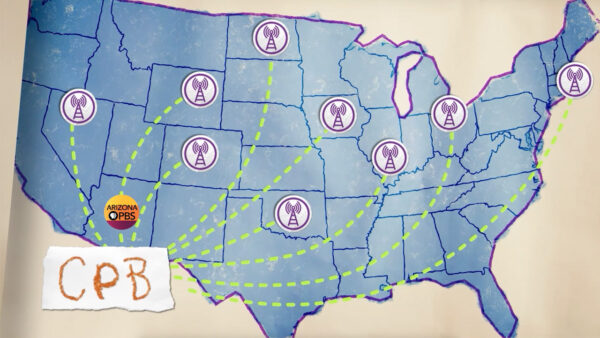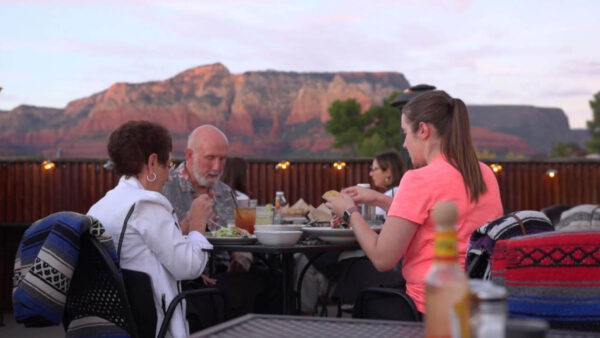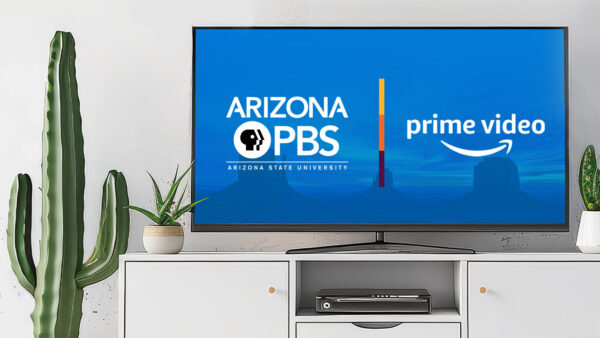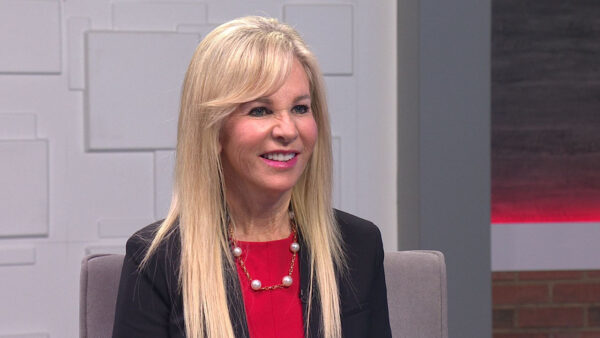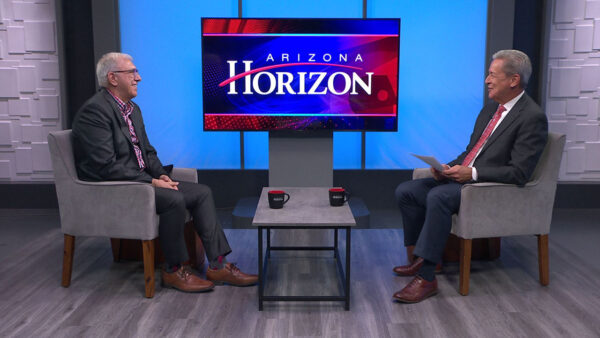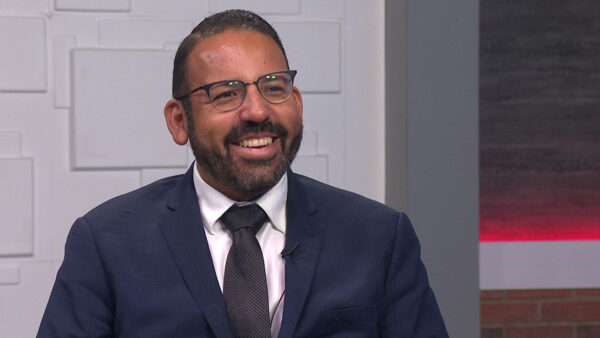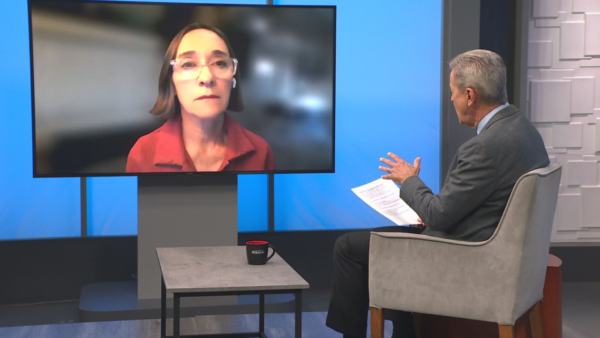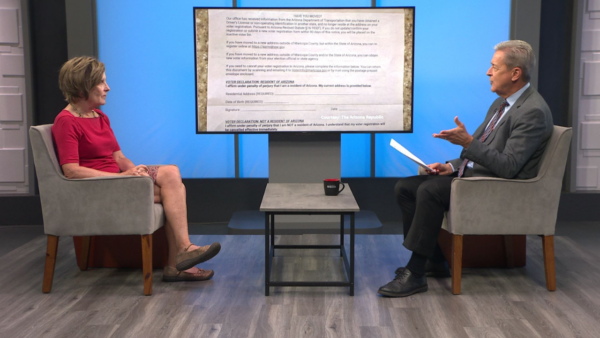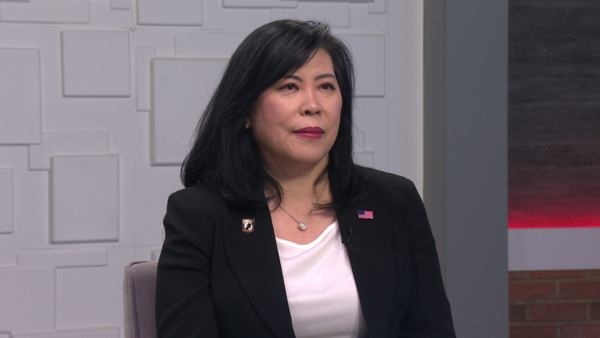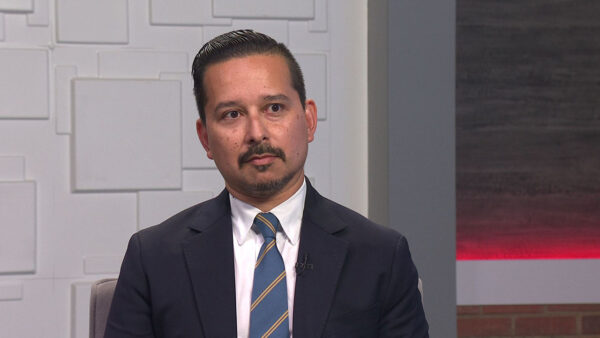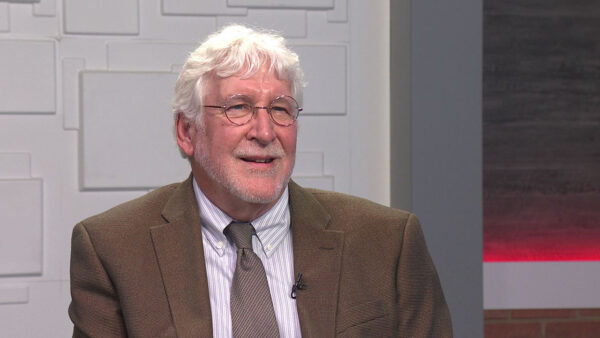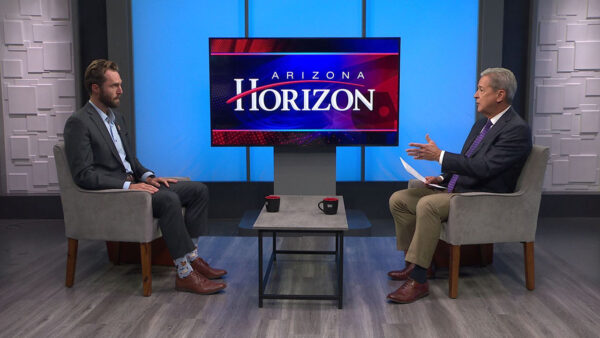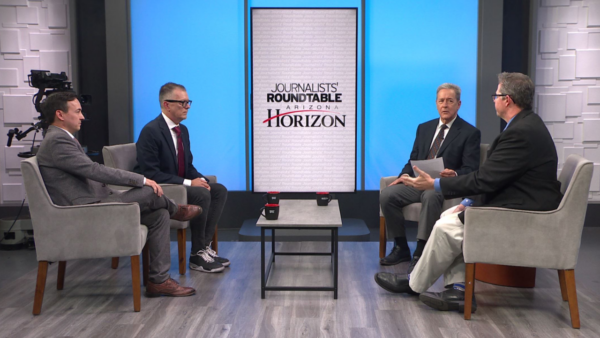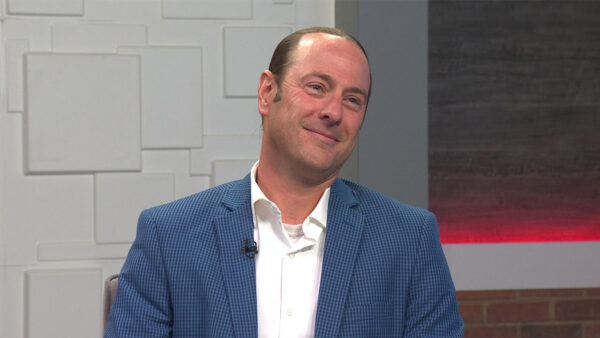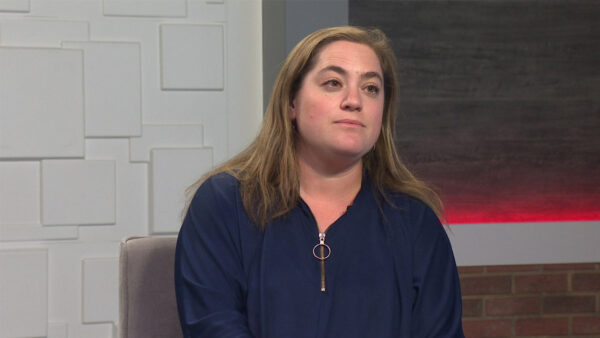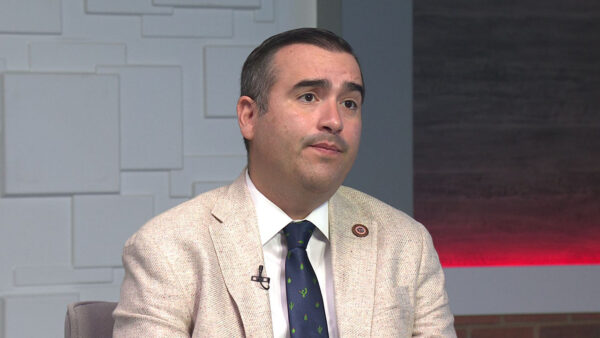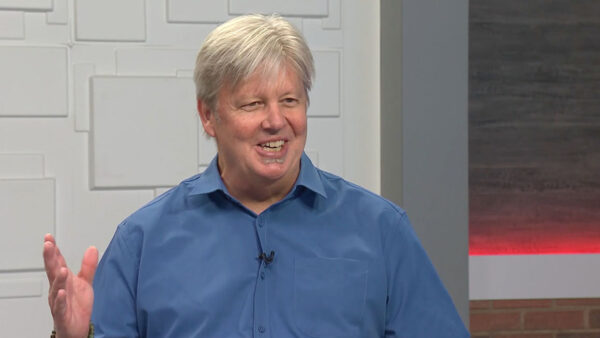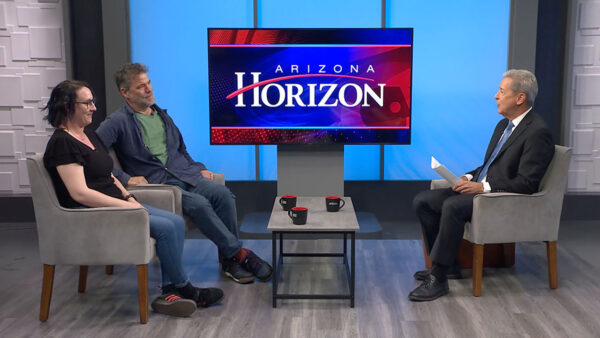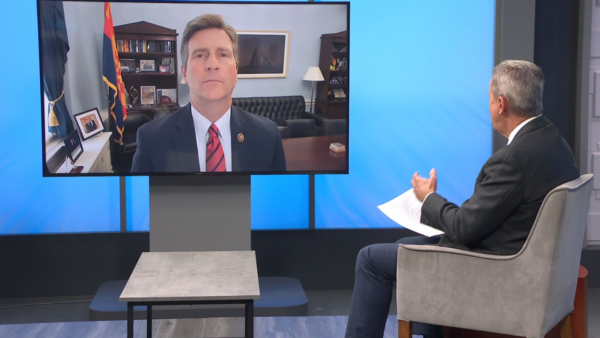We’ll follow a female Southwest Airlines pilot participating in the company’s “Adopt a Pilot” program, where a pilot teaches a fifth grade classroom STEM skills involved in flying. Then we’ll talk about getting more girls into STEM education and careers. Tirupalavanam Ganesh, Tooker Professor and assistant dean of engineering for education in Arizona State University’s Ira A. Fulton Schools of Engineering, Monica Crowder, a Science/STEM specialist in the Kyrene School District, and Gabriel Escontrias, manager of ASU’s Center for Gender Equity in Science and Technology, will discuss the challenges and solutions in getting more girls into STEM.
Ted Simons: Coming up next on "Arizona Horizon," we'll hear about efforts to get more girls into science and engineering education and careers. And we'll visit with the retiring founder of the Childsplay Theater Troupe. Those stories next on "Arizona Horizon."
Video: "Arizona Horizon" is made possible by contributions from the Friends of Arizona PBS, members of your PBS station. Thank you.
Ted Simons: Good evening and welcome to "Arizona Horizon," I'm Ted Simons. The U.S. Supreme Court today issued a ruling that allows police to use evidence that was obtained during an unlawful police stop. The case involves a Utah man who was stopped illegally by a police officer. The officer then found an outstanding warrant against the suspect. The man was arrested, and a subsequent search revealed methamphetamine. At issue for the court was whether or not the warrant outweighed the illegal stop, which was made without any suspicion of a crime being committed. Justice Clarence Thomas wrote that, "While the officer's decision to initiate the stop was mistaken, his conduct thereafter was lawful." In a dissent, Justice Sonya Sotomayor wrote that, "the court today holds that the discovery of a warrant for an unpaid parking ticket will forgive a police officer's violation of your fourth amendment rights." The decision was a 5-3 ruling, with justice Steven Breyer joining conservatives on the majority side.
Ted Simons: And Arizona congressman Ruben Gallego today endorsed a ballot initiative to legalize recreational marijuana in Arizona. In making the announcement, Gallego said that, quote, "Forcing sales of this plant into the underground market has resulted in billions of dollars flowing into the hands of drug cartels and other criminals. We will be far better off if we shift the production and sale of marijuana to taxpaying Arizona businesses that are subject to strict regulations." It will also allow the state to direct law enforcement resources toward reducing violence and other more serious crimes. Arizona Republican congressman Matt Salmon opposed the initiative, saying that, quote, "At a time when government should be shrinking and we should be having less government in our lives, the last thing I want to see is one more initiative that creates other levels of government." The initiative would allow people 21 years or older to possess up to one ounce of marijuana.
Ted Simons: Tonight's edition of Arizona education looks at a unique program from Southwest Airlines that combines STEM education and aviation training. Producer Shana Fischer introduces us to the Adopt-a-Pilot program that helps students take flight.
Nancy Belitz: What do those fan blades do? Go ahead.
Student: These fan blades suck in air so once all the fuel comes in and so when the air and fuel mix together it creates combustion which propels the plane forward.
Shana Fischer: She's teaching math and science using her knowledge as a pilot and now, it's their turn to show her they were listening.
Nancy Belitz: 25 years ago, a woman approached me, I was just greeting the passengers saying goodbye to the passengers and she said wow, a woman pilot. She said was there any chance that you would come to my elementary school, I'm an elementary school teacher, and possibly inspire or talk with the children and I said I would love to.
Shana Fischer: Out of that simple conversation, southwest airlines started its Adopt-a-Pilot program. Pilots across the country adopt a fifth grade class and visit three to five times in the semester. The airline supplies the syllabus, workbooks and materials for science projects. Today, the students from El Dorado private school are on a field trip at sky harbor international airport.
Nancy Belitz: We're doing a tour of the aircraft, we've talked to the kids about how these wings produce lift so we're going to let them touch, feel the engines, get inside, and show them the cockpit. We've talked about some of the instruments and what we use so get each of the kids in the seat and let them pretend that they're a pilot as well for a bit. I'll let them talk on the P.A., talking to the cabin; maybe let them crawl in the cargo bins.
Shana Fischer: While the students examine the plain, it's also a chance to revisit the concepts she taught them.
Zach Zhong: I have to memorize this now, it's useful because I want to use the measurements and thrust and speed and altitude.
Shana Fischer: After a tour of the outside of the plane, the students head inside.
Nancy Belitz: So this is our hydraulic and navigation panel.
Shana Fischer: For Joshua Branter who wants to be a pilot when he grows up, seeing the cockpit up close is a dream come true.
Joshua Brantner: Well, it feels like you're driving a car. It kind of feels like you're in control like there's -- you would think it would be harder to fly but it's actually really easy.
Shana Fischer: 900 southwest airlines pilots participate each year in the program. They share their flight schedule with the classes and send postcards from the cities they fly to and find new ways to engage the students. Captain Glenn Roberts also flies helicopters. Each year he lands his chopper on the school field to give his students a look at a different part of aviation. Both at Southwest's hangar, they're wrapping up their tour and they get to practice some of the southwest airlines flight attendants' trademark humor.
Students: If you're traveling when someone who needs assistance, like your husband.
Shana Fischer: The end goal of the program is to show kids math and science are in every vocation, especially aviation.
Joshua Brantner: Well, it truly comes together to form this. It's actually quite interesting how all this comes to form this. It's really amazing.
Shana Fischer: The captain hopes to inspire something deeper in her students. 4% of pilots flying for southwest airlines are female but the captain says doing your best and achieving your dream have little to do with gender.
Nancy Belitz: What I say to young girls to encourage them to achieve their dreams, the same thing I say to the young boys, to be grateful for what you have, to be honest, to be kind, and then to choose your goal, believe in yourself, just never give up on that. [ Laughs ]
Ted Simons: The Adopt-a-Pilot program celebrates its 20th anniversary next year. Check out the website on your screen if you'd like to find out more about the program and learn how to arrange for a pilot to visit your school.
Ted Simons: Many involved in STEM education are working to get more girls in science and engineering programs and careers. Here with more is Tirupalavanam Ganesh, assistant dean of engineering for education at ASU's Ira A. Fulton schools of engineering, Monica Crowder, a science STEM specialist in the Kyrene school district, and Gabriel Escontrias, manager of ASU's center for gender equity in science and technology. Good to have you all here, thanks for joining us.
Ted Simons: We want to get more girls in STEM education, science, technology, engineering and math. Why?
Tirupalavanam Ganesh: So engineering requires creativity and innovation. If you have the same people at the table designing solutions that the world will use, it's not going to bring in the creativity that other people could have brought to the table if you don't have them sitting at the table designing these solutions so if you have women, at the table doing it with the others at the table, then you have the opportunity to say here is creativity that's being driven by diversity.
Ted Simons: It sounds as show there's a Forbes magazine report showing there's been no growth in STEM jobs for women since 2000 or so. Why is that? What's going on out there?
Monica Crowder: So one of the issues is we're designing products but we're also designing them for women so we say that we have a leaky pipeline in STEM education. So I know they've done a lot of research on that. Part of is like we think about the pilot. Girls could see her and if they can see her, they're more likely to be like her. Part of the problem is if we don't have females in positions like professors or in the sciences and math teaching them, women are less likely to probably stay in that field.
Ted Simons: Is that the reason why women are historically underrepresented in these kinds of fields? It starts really from early education, mentors, symbols, etc.?
Gabriel Escontrias: I think there's a variety of issues as to why women maybe don't go directly into the field, why they don't persist in the field, and I think we need to let women know and also be empowered to know that by being in this field you are bringing your lens and you are bringing your creativity to it, to how you address solutions so it's being solution oriented. In addition, when we look at other factors, they are socialized sometimes, not to have those role models so it is important to make sure you have mentors, that you build a culture and environment in your company to actually make sure that everyone at the table is going to be successful because it's very difficult to be at a table and not have anyone that looks like you or thinks like you or anyone that you can actually feel like you're part of a team.
Ted Simons: Is education also a factor here? Do teachers, educators, do they need to kind of change the idea, change the paradigm, if you will, of how you teach kids?
Tirupalavanam Ganesh: Absolutely. We need to be doing a lot more to help children enjoy science that the study in school so it's making sure the children are actively doing science and understanding what it means to learn what they are learning and how it's relevant to society so they can make meaning out of it. When we're simply telling you learn these facts because you're going to be tested on it, it's not going to result in deep understanding of the concepts. So that's one thing you could change.
Ted Simons: And kind of referred to this earlier as well, the idea maybe combining disciplines, maybe a little bit of art with science or just changing things?
Monica Crowder: So we often refer to as steam and you integrate the arts because you're designing, you're creating, you're learning by making. So I think that has an appeal for children and cults. And I think it's the key, like you said, start them young. I like the pilot had fifth graders. So sometimes, we think oh, we'll catch them in high school and often I think that's too late. I would say we should start as early as preschool and kindergarten.
Ted Simons: That's a good question. From where you sit, when does it seem like girls all of a sudden maybe they were just powerhouses there in elementary school, the early grades, all of a sudden, it just seems to drift away?
Monica Crowder: Middle school. Even though they're scoring as high if not higher than the boys I think it's a socialization piece, that it becomes what am I going to do with my life and is this something that I can picture a girl doing? Is this something that a normal girl would do, being an engineer or being a scientist? And the more they can see role models like the pilot, I think the more likely they are to associate it with women and figure out that this might be something that they're interested in doing.
Gabriel Escontrias: And then just to add to that we definitely do need to start in middle school and before that because if we lose the girls at that point, they're going to become deficient when they arrive in high school. They're not going to take the right courses that they need to be competitive when they enter college and apply to engineering degrees, aerospace or the degrees that they wanted to do. If we're able to work with them earlier on and make sure that they're empowered, that their parents are also involved and engaged in the process and the parents are going to know what to require of these young ladies to make sure they're preparing them for college and the field that they want to go into.
Ted Simons: ASU has a program, young engineers shape the world. What is this all about?
Tirupalavanam Ganesh: This is a new effort that we're launching in area high schools and the goal is to recruit young women and men but the aim is to actually focus on women so they can see what the possibilities are outside of what they know. If you don't know what engineers do, how are you going to choose that as a profession? So the idea is to help work with them for two years in a row when they are in 11th and 12th grade so by the time they leave 12th grade they are confident, they know that they can achieve a degree in engineering and a career in engineering and work with industry partners to actually make it possible for them to say what an engineering workplace looks like and what the by-products of engineering are that impacts society.
Ted Simons: It sounds like that is key as far as getting them engaged and keeping them engaged is just basically seeing that they can be engaged, correct?
Monica Crowder: I agree and we talk about it, we've worked together, we talk about the importance of solving a real problem so that's part of it. What problem do you want to solve and having them apply their skills to solving an interesting problem, it makes it engaging for all kids, not just women.
Gabriel Escontrias: And that's also what we've been able to do. A program that we have in our capacity at the center has been around for 10 years. We'll be celebrating 10 years next semester, that's one of the things we focus on is the social justice component. There's something they can solve and there's something that they can use the technologies that they learned to solve that problem, and then that allows them to be invested.
Ted Simons: So I guess bottom line, early exposure, major mentoring, major, correct?
Tirupalavanam Ganesh: Absolutely. And knowing that you can do it, having the self-confidence, having the self-efficacy that you can become an engineer, you can achieve this and make a difference in people's lives.
Ted Simons: And last question for you. Do you deal with parents who don't get it themselves?
Monica Crowder: Sometimes. You'll hear things like I'm not good in math and you tend to hear that more from females and it's a skill that you can learn. So for parents like sometimes, they'll offer suggestions. So excellent camps that they can attend at ASU or we have after-school programs and the toys you select, it starts young.
Ted Simons: All right. Are you encouraged about this? Seeing more girls?
Gabriel Escontrias: We see a lot more districts partnering with us because we run our programs in the school.
Ted Simons: Very good. Good to have you all here. Thanks for joining us.
All: Thank you.
Tirupalavanam Ganesh: Assistant Dean of Engineering for education in Arizona State University's Ira A. Fulton Schools of Engineering, Monica Crowder: A Science/STEM Specialist in the Kyrene School District, Gabriel Escontrias: Manager of ASU's Center for Gender Equity in Science and Technology
